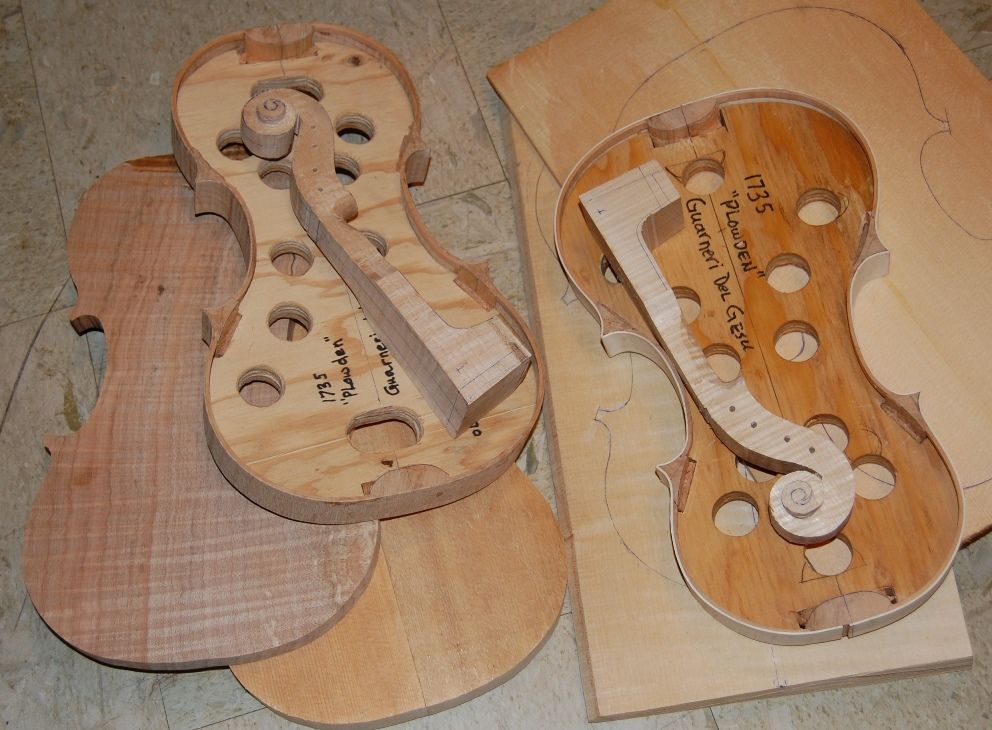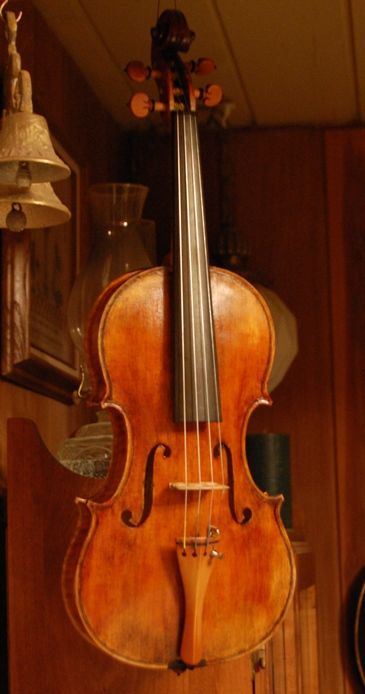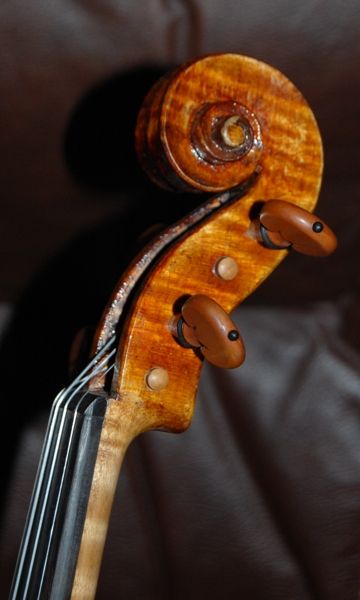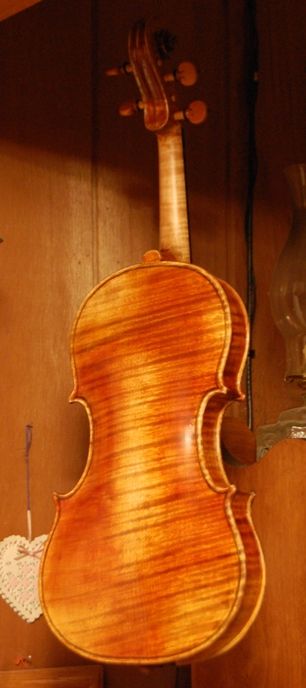Progress Report on the 14″ Oliver Viola, and the Violin Modeled after the 1735 “Plowden” Guarneri.
“Life is what actually happens while you are making other plans.”
Well…company came and went, and the week didn’t happen exactly as I wanted it to; There were other things to do, and people to spend time with. My only daughter was here all week, which was nice– she flew in from Switzerland, with about a week’s notice. We went to the beach, Monday, and spent the day infiltrating all the art and clothing stores in Cannon Beach, then had fish and chips and headed home. 🙂
My younger brother dropped in for a surprise visit today, with my young neice. That was a nice visit. While they were here, a neighbor couple showed up, too. We ate and visited, and had a nice evening. Afterward, I helped Ann trim a hedge and haul the branches to the burning pile. All good things.
So! Progress report:
I am trying to keep the two instruments on parallel tracks for completion…hoping to keep them no more than a few hours apart in terms of progress.
Progress in building 14” Guarneri-model Viola and Violin:
(Hand-carved instruments begun on May 25th, 2016)
- Cut and install the blocks. (May 25th)
- Prepare the ribs, by sanding (using a plywood jig I made to use with my spindle sander). (May 25th )
- Bend the ribs, using the bending iron, and install them on the blocks (several steps). (May 26th, 27th)
- Prepare, install and shape the front linings. (May 27th, 28th)
- Use the sanding board to flatten front of garland. (May 30th)
- Prepare the plate stock (book-match and flatten inner side) (Front only—one-piece backs on both fiddles.) (May 30th)
- Use the completed garland to establish the shape of the plates. (May 30th)
- Cut the front plate exactly to size, including filing and sanding. (Only got the viola cut out. I will cut out the violin tomorrow night if it isn’t too hot when I get home. )
- Lay out and cut out scroll and neck. (May 26th)
(Began carving both scrolls using gouges and small finger-planes—spent a good part of May 28th doing that, while waiting for bending irons to heat up, etc. More time as time and strength allow. That maple is tough stuff, and my hands tire quickly anymore.)
Here is the photo-evidence: Handmade in Oregon 🙂

The instrument on the left is the 14″ viola, and is made of Oregon Big Leaf Maple, and Sitka Spruce. The one on the right is the violin, and is made of European Maple and Spruce. Both have blocks and linings of weeping willow.
I ran out of time and energy, so the cutting out of the violin plates will have to wait until later. Once they are cut out, I can begin arching the front plates, and get these things looking more like fiddles.
As you can see, I am trying corners that are a little longer, this time. I may end up shortening them after all, but I left extra in case I wanted them longer. Usually I make pretty short corners.
Vacation is Over– Back to Work!
That’s all I have to show, for today. I go back to work tomorrow. Classes are over for this term, but I still have to prepare certificates, and arrange make-up tests for those who need them.
(For those who don’t know, I teach Welding Supervision classes at Gunderson, Inc. where I have worked for the last nearly 30 years. I began there as a welder, but nowadays I mostly lecture. Print-reading classes, remedial Math classes, Welding Inspection classes, Safety, Metallurgy, etc. It is not as fun as making fiddles, but it is steady. :-))
Thanks for looking,
Chet

 Follow
Follow



